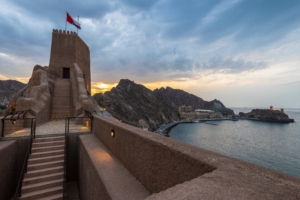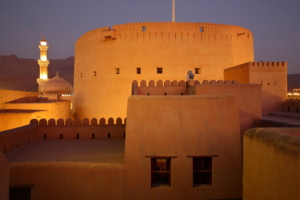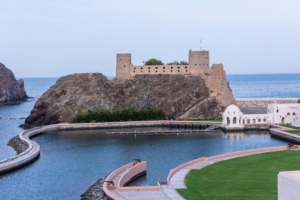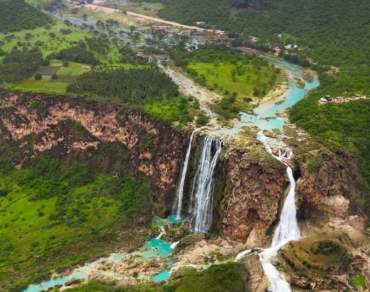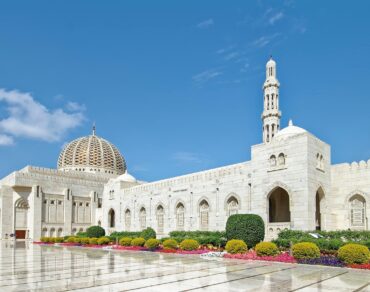
-
Oman Tour Packages > Blog > Why Oman Castles Are The Middle East’s Best Kept Secret
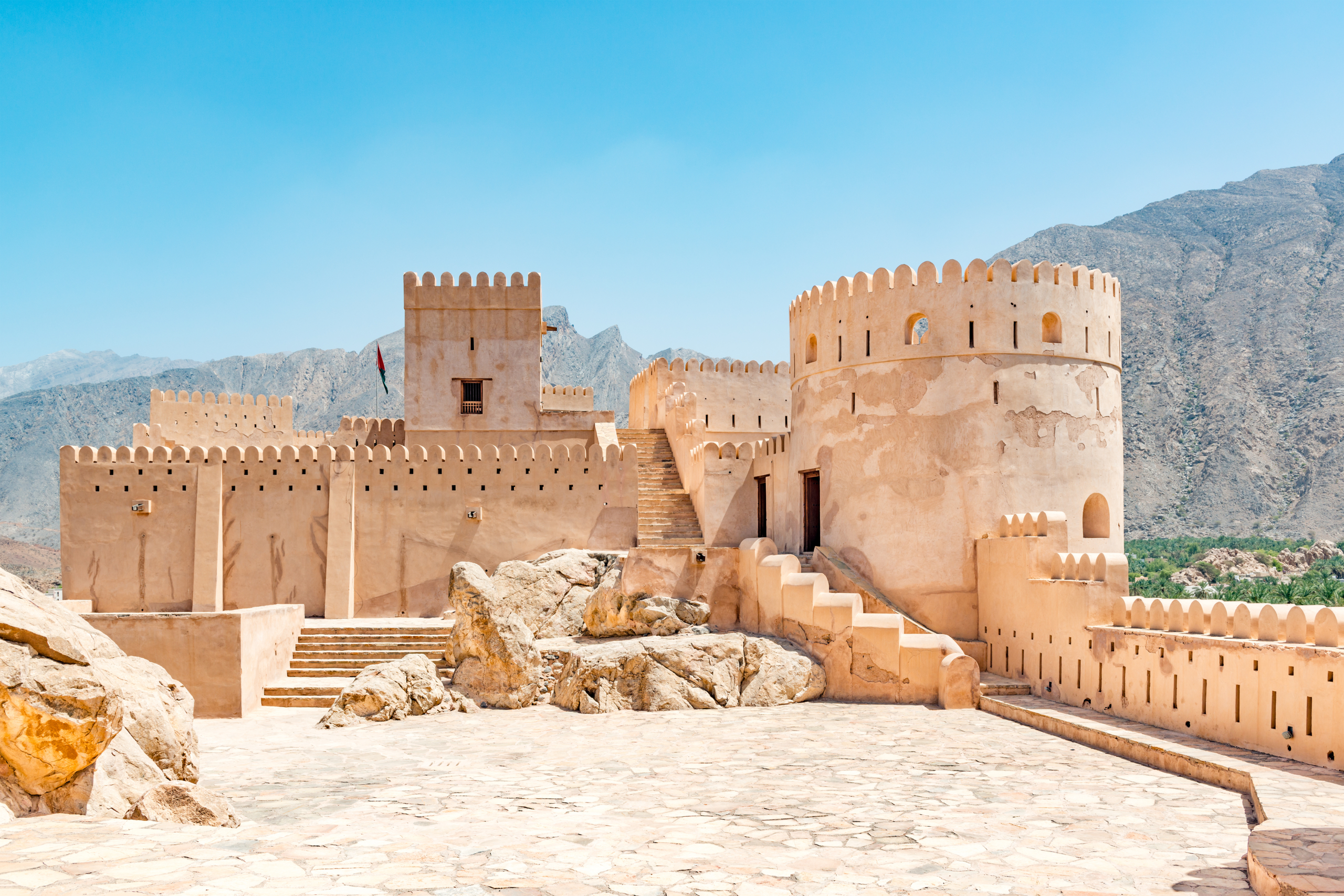
Why Oman Castles Are The Middle East’s Best Kept Secret
Oman’s landscape features an incredible collection of 1,000 historical forts, castles, and watchtowers. These magnificent structures stand as silent guardians of the country’s rich heritage. Most of these architectural treasures date back to the 17th and 18th centuries, and careful restoration work has kept them in remarkable condition.
These architectural marvels captivate visitors because each fort reveals its own fascinating story of defense and cultural heritage. The country wants to welcome more tourists, planning to increase visitor numbers from 3 million to over 11 million by 2040. This makes it the perfect moment to discover these hidden gems. The UNESCO-listed Bahla Fort stands out among these treasures. Nizwa Fort, the country’s most popular monument, impresses visitors with its 24 cannons and 480 gun ports. These remarkable structures deserve a prominent spot on your travel itinerary.
The Rich History of Oman’s Defensive Architecture
Oman’s defensive structures represent a 2000-year-old architectural legacy that dates back to the pre-Islamic Persian era. Simple watchtowers grew into complex defensive networks over centuries and changed the country’s military and cultural map.
Early fortification systems
Omani defensive architecture has its roots in the Abbasid period (750-1258). Builders drew inspiration from Persian and Byzantine military designs during this time. These early fortifications stood out with their strategic towers and thick walls. Builders used local materials like mud-brick and stone to construct these structures.
Portuguese influence on design
Portuguese forces arrived in 1507, which changed Omani military architecture forever. They brought new anti-artillery construction techniques to Oman. The twin fortresses of Al Jalali and Al Mirani, built in 1588, showcase this influence. These coastal strongholds featured:
- Reinforced walls that could withstand cannon fire
- Natural defensive pinnacles for strategic positioning
- Military structures with integrated chapel designs
- Better coastal defense systems
The golden age of fort building
The Ya’ariba dynasty (1624-1749) brought the most innovative era in Omani defensive architecture. Local builders became skilled at mixing Portuguese technical knowledge with traditional Omani architectural elements. They developed sophisticated defensive features like machicolations, crenulations, and strategic loopholes.
Nizwa Fort stands as the era’s greatest achievement, taking 12 years to complete. The Ya’ariba rulers also built an impressive network of watchtowers along the Sumayl Gap. This created a connected defensive system that protected vital trade routes.
These architectural breakthroughs served more than military purposes. Jabrin Palace emerged as a perfect example that combined defensive capabilities with comfortable living spaces. Omani builders created unique water storage systems and living quarters suited to the harsh climate. They placed windows strategically to catch cooling northern breezes.
Most Impressive Castles to Visit in 2025
Two structures stand out for their architectural brilliance and historical significance among Oman’s magnificent castles. These fortresses give visitors an exceptional view of the nation’s defensive heritage.
Nizwa Fort: The crown jewel
This monumental fortress dominates Nizwa’s skyline and remains Oman’s most visited national monument. The fort showcases remarkable defensive engineering since its construction in the 1650s. Its mammoth circular tower measures 46 meters in diameter and rises 35 meters high.
The fort’s defensive capabilities feature masterful design elements:
- 24 cannons positioned around the tower’s top
- 480 gun ports strategically placed throughout the structure
- Multiple wells ensure a water supply during sieges
- Secret escape tunnels for emergency evacuations
The fort welcomes visitors daily from 8:00 AM to 8:00 PM. Friday hours are 8:00 AM to 11:30 AM and 1:30 PM to 8:00 PM
Bahla Fort: UNESCO heritage site
Bahla Fort differs from its Nizwa counterpart and holds the honor of being Oman’s first UNESCO-listed fortress. The Banu Nebhan tribe built this colossal structure between the 12th and 15th centuries. It stands as the sultanate’s largest fort.
The fort’s grandeur stretches beyond its walls and includes a 13-kilometer defensive perimeter that protected the ancient oasis settlement. The fort reopened in 2012 after extensive restoration work that preserved its authentic medieval Islamic architectural elements.
The fort’s cultural significance runs deep in local folklore. Unlike other Omani fortresses, Bahla’s history intertwines with mystical tales. Some locals believe supernatural forces built its extensive walls in a single night.
Visitors can best explore these magnificent Oman castles from November through March. The temperatures range from 17°C to 25°C during this period, making outdoor exploration comfortable. Both fortresses showcase unique aspects of Omani defensive architecture. Nizwa displays 17th-century state-of-the-art military design while Bahla represents medieval Islamic fortress design at its finest.
Unique Architectural Features
Oman’s castle walls hide fascinating architectural features that demonstrate exceptional engineering skills. These structures showcase advanced defensive systems, smart water management, and thoughtfully designed living spaces that have lasted for centuries.
Defense mechanisms
The fortresses’ defensive elements protected entrances and key strategic points. Attackers faced tough challenges, especially at gateways where defenders used specially designed murder holes and slots to pour boiling date syrup (asal) on them. The fortifications went beyond just thick walls and included several tactical features:
- False doors and secret shafts to confuse enemies
- Seven interior wells and staircases with blind turns
- Vertical trapdoors along defensive routes
- Murder holes near entrances
Water storage systems
Smart water management systems were vital to keep these fortresses running. Large fortifications used the falaj system – underground water channels that ran through their lower levels. The water networks had three main types:
Dawoodi Falaj channels stretched several kilometers underground and supplied water year-round. Builders also added multiple wells as backup water sources during sieges. The Ghaili Falaj reached depths of 3-4 meters and collected water from ponds and running sources.
Living quarters design
The living spaces showed amazing architectural skill, with designers making comfort their priority despite harsh weather conditions. Each room had thick walls with large lower windows that let cool air in, paired with smaller upper openings that released hot air. The builders created beautiful ceilings using palm trunks and candlewood in crisscross patterns.
These fortresses had spaces for every need – from simple mosques and majlis (meeting rooms) to separate quarters for men and women. Special areas included date processing rooms, and some had unique features like Jabrin Castle’s ruler’s horse stall at the top of a custom-built staircase.
Cultural Significance Today
The Ministry of Heritage and Tourism leads Oman’s architectural preservation efforts. Their impressive work restored 310 archeological sites in 2022 alone. This achievement shows their steadfast dedication to protecting historic fortresses for future generations.
Modern preservation efforts
Heritage preservation has changed substantially through mutually beneficial alliances and international cooperation. Italian expertise has made substantial contributions to archeological projects and restoration techniques, thanks to a special relationship between Italy and Oman.
The ministry’s detailed restoration campaign covers:
- 83 castles, fortresses, and archeological walls
- 145 defensive towers
- 80 historic mosques
The ministry has identified 3,423 additional archeological sites that need future restoration and maintenance. Preservation work goes beyond structural repairs. Traditional architectural elements blend into new buildings, which creates cities with both modern and ancient character.
Local community involvement
Community-led initiatives have revolutionized heritage preservation in Oman. Local communities now take a central role in what experts call ‘bottom-up’ management of built heritage. This approach has worked exceptionally well in projects like Misfat Al-Abriyin, where local families have turned historic properties into popular tourist destinations.
Private sector opportunities have expanded through the Ministry of Heritage and Tourism’s efforts, alongside plans to boost tourism. The Oman 2040 Vision framework wants to increase tourist numbers from 3 million in 2023 to over 11 million by 2040.
Successful community projects have sparked a wider appreciation of architectural heritage. Companies and institutions can now bid to manage heritage sites, including landmarks like Jabreen Castle. Historic fortresses have become dynamic cultural centers that host art exhibitions and community events.
These preservation efforts got international recognition when teams from Gulf Cooperation Council nations came to study Oman’s heritage management model. The initiatives protect architectural treasures and create jobs for local Omanis. This ensures these historic monuments will survive for future generations.
Planning Your Castle Visit
Finding the right time to visit Oman’s majestic fortresses needs good planning and local knowledge. You need to know about weather timing and expert guidance to make your castle visit unforgettable.
Best time to visit
The best months to see castles are October through March, when temperatures stay between 15°C to 30°C. Most castles welcome visitors from 9 AM to 4 PM, Saturday through Thursday. Check the Friday timings before you go, as many places only open from 8 AM to 11 AM.
The busiest travel months are January and February. The weather around historic sites stays crisp and comfortable. You should book your stay several months ahead during these peak times. April gives you a chance to see both castles and blooming roses at Jebel Akhdar.
Photography tips
Light and technique matter a lot when you shoot Oman’s grand castles. The buildings look their best under these conditions:
- Soft light during early morning or late afternoon
- Bright sun at noon shows off the water features’ turquoise colors
- Long-lens shots (70-200mm) work best for desert castles
- Ask permission before taking photos of local people
Weekday or early morning visits help you avoid crowds in your pictures. Professional photographers say the “golden hours” – sunrise and sunset – make castle details pop with soft light.
Local guides and tours
A licensed Omani guide adds value with deep cultural insights and historical background. The Omani Ministry of Tourism certifies these guides who run specialized castle tours based on what interests you. Here’s what expert guides bring to the table:
They start with a detailed history and explain architectural features and cultural importance. You can pick from single-castle visits or multi-day trips to see fortifications of all sizes. These guides often get you discounted entry fees and special access to restricted areas. These guided trips usually include stops at traditional markets and cultural sites. You can choose simple local trips or luxury tours, and guides to help create the perfect castle visit plan.
Conclusion
Oman’s castles are evidence of architectural brilliance and military breakthroughs. These magnificent structures tell their centuries-old stories and welcome millions of visitors each year through careful preservation work.
Visitors who spend time learning about these fortresses find much more than defensive architecture. Each castle gives a unique explanation of Omani culture, engineering excellence, and historical significance. The impressive circular tower of Nizwa Fort and Bahla’s UNESCO-listed walls give visitors new views of Middle Eastern heritage.
These defensive masterpieces prove why they are the region’s best-kept secrets. Smart planning makes a difference. The best castle visits happen during cooler months, between October and March, with knowledgeable local guides. Photography sessions during golden hours will improve the experience.
History enthusiasts and casual tourists can expect memorable experiences from these architectural treasures. Oman’s ambitious 2040 tourism goals create a perfect chance to see these magnificent fortresses before they gain worldwide recognition.
Related Tours
Related Tours
Test2
© 2025 Oman Tour Packages. All rights reserved.
